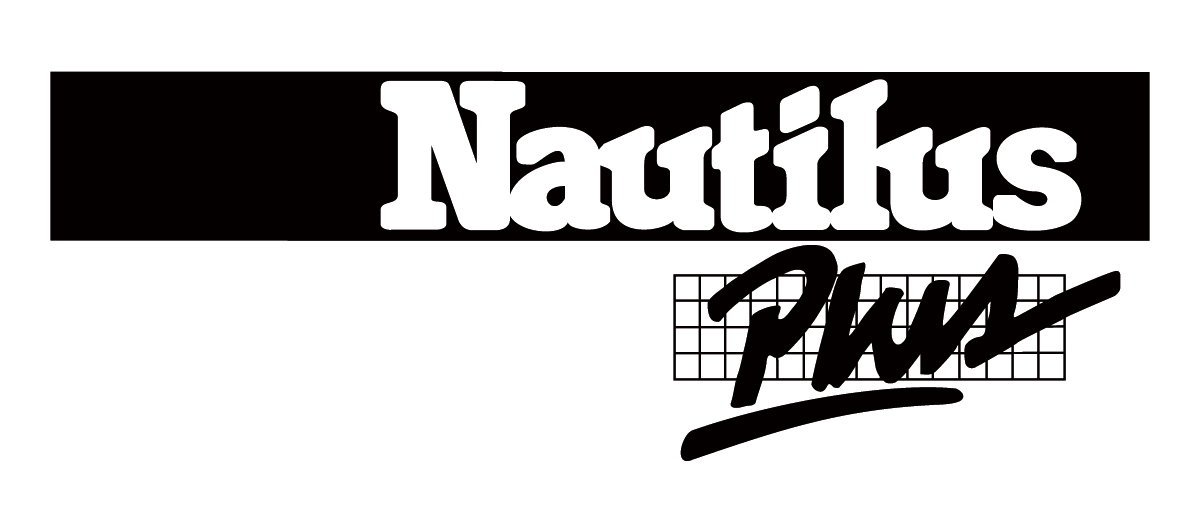
You’d like to try a yoga class but are worried you won’t be able to follow the instructor’s guidance? Yoga includes countless postures, but some are more common than others. So here are, in my opinion, the 10 essential yoga poses to know before attending your first class. I’ll give you their names in both English and Sanskrit.
I’ll also share a few benefits associated with each posture, along with one or two helpful tips I wish someone had told me to make them easier! This way, you’ll feel more confident when approaching yoga, even if it’s your very first class.
Just remember: in yoga, the goal isn’t a “perfect pose.” Instead, we aim to feel the stretch and activation in the right areas. You should never feel pain—if you do, don’t hesitate to ask the instructor for modifications. Be kind and patient with yourself, and as with anything, progress comes with practice!
Here are my 10 yoga poses:
1. Child’s Pose: Balasana
Benefits: Promotes relaxation, stretches the hips and lower back while lengthening the spine.
Helpful tip: If you feel suffocated when leaning forward, spread your knees wider and use a block to rest your forehead on. If your hips don’t reach your heels, place a rolled-up blanket or bolster for more support. Your arms can be stretched forward or relaxed by your sides—whichever feels better.
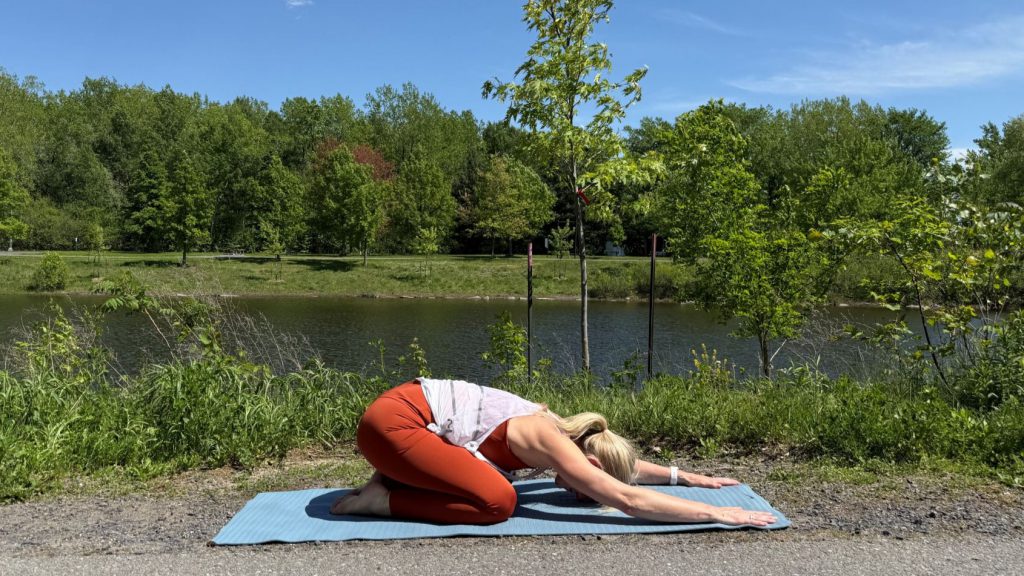
2. Cat-Cow: Bitilasana Marjaryasana
Benefits: Awakens both the upper and lower back while stretching the abs and hips. May help reduce back and neck pain.
Helpful tip: Sync your movement with your breath—inhale as you arch your back (cow), exhale as you round your spine (cat). Close your eyes and move at your own pace.
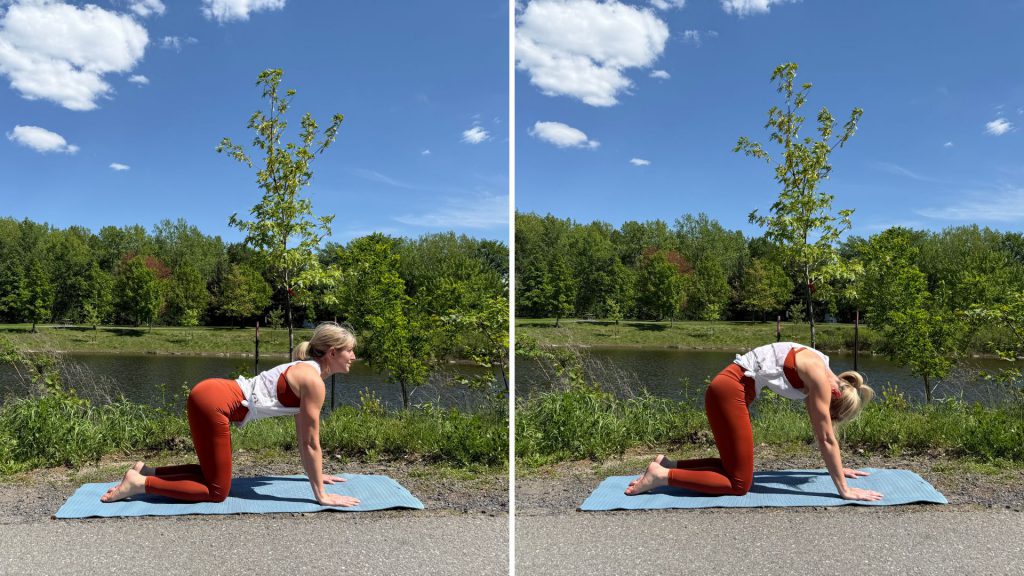
3. Downward-Facing Dog: Adho Mukha Svanasana
Benefits: Strengthens the upper body (especially the shoulders), stretches the back and legs, and improves blood flow to the head.
Helpful tip: This pose isn’t easy! If you feel too much strain in your arms, try shifting some weight into your legs. Push the floor away with your hands, fingers spread wide. Activate your quads by drawing them toward your hips, and simultaneously try bringing your heels closer to the floor for a deeper stretch. Feel free to drop to your knees and rest in child’s pose anytime.
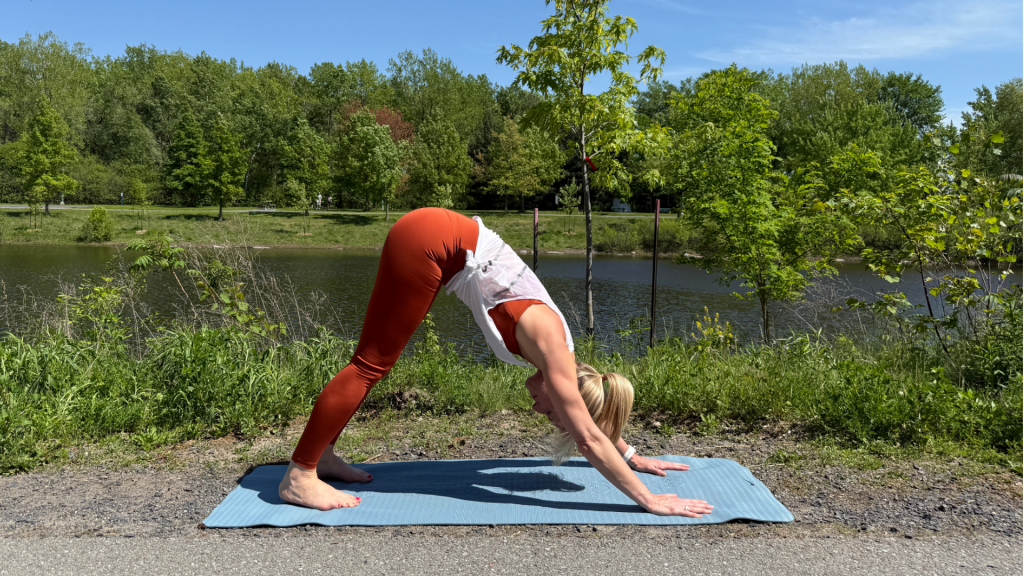
4. Low Lunge / Crescent Moon: Anjaneyasana
Benefits: Stretches the hip flexors and quads while opening the chest and shoulders.
Helpful tip: Keep your hands on the floor or on your front knee. Place a cushion under your back knee for comfort. If your front knee hurts, move your foot forward to ensure it’s stacked directly over the knee. Engage your core and tuck your tailbone under to protect your lower back.
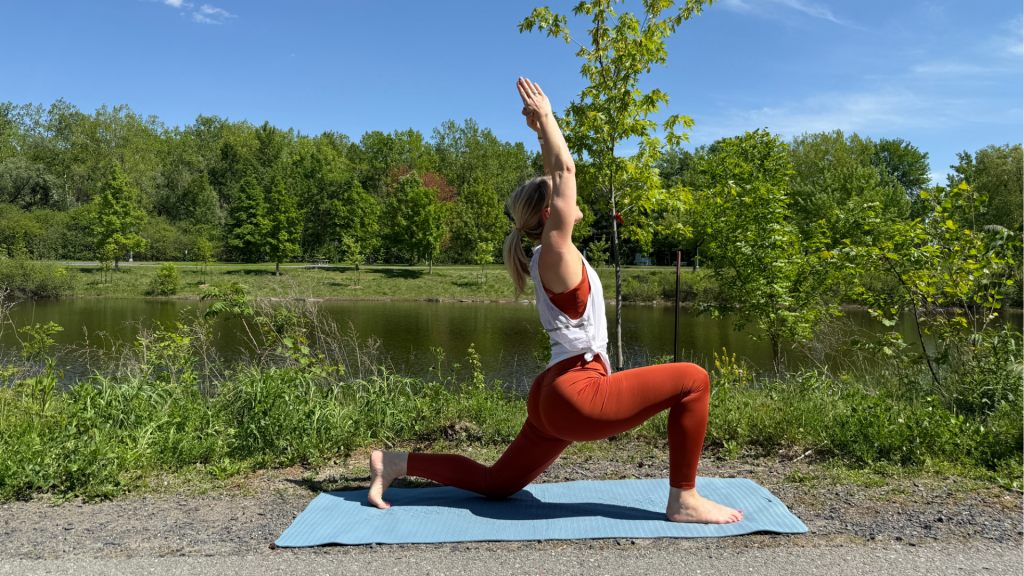
5. Warrior I: Virabhadrasana I
Benefits: This pose represents power, strength, and calm. It strengthens and stretches the legs, core, shoulders, and arms.
Helpful tip: Try to square your hips forward—imagine headlights on your hips pointing straight ahead. Engage the front leg muscles to prevent the front knee from caving inward.
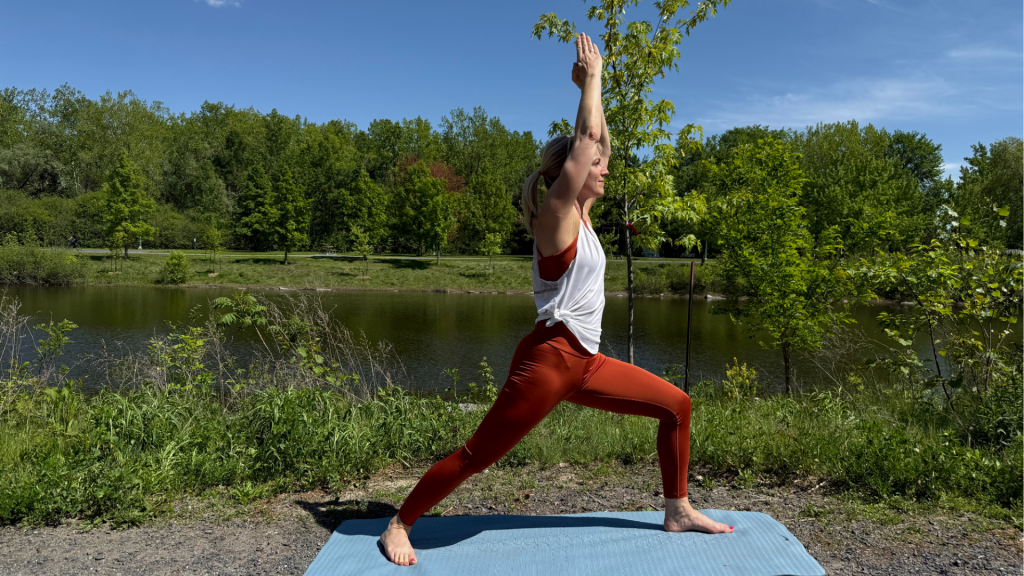
6. Warrior II: Virabhadrasana II
Benefits: Stretches the hamstrings, opens the hips and chest, and strengthens the shoulders. It promotes stability and requires concentration and energy.
Helpful tip: At first, shorten the distance between your feet. As you build strength, increase your stance and lower deeper into the pose. Keep your front knee above the ankle. If there’s knee pain, ensure your knee doesn’t go past your toes and slightly straighten your leg if needed.
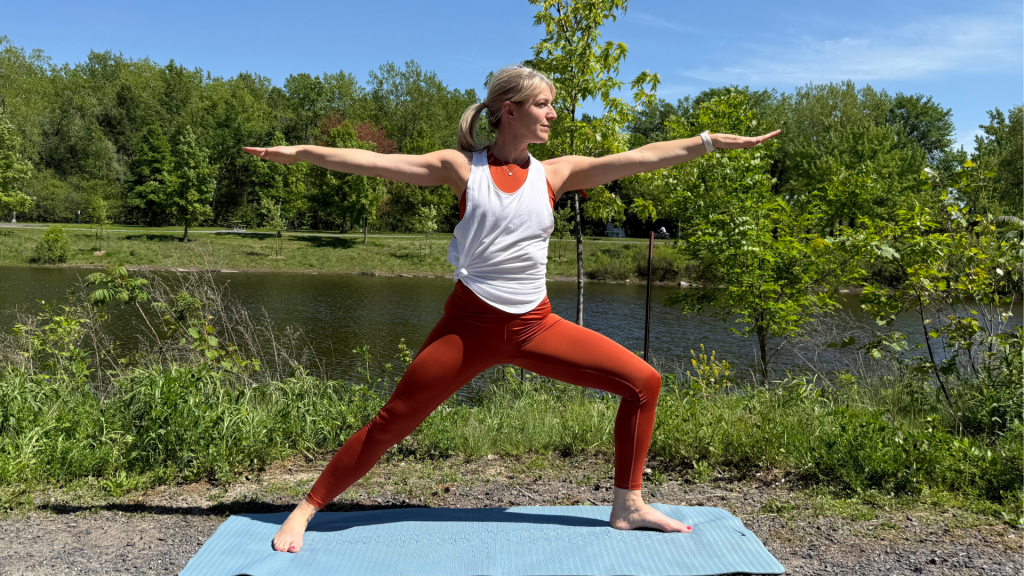
7. Standing Forward Bend / Rag Doll: Uttanasana
Benefits: Releases tension in the neck, shoulders, and lower back while stretching the hamstrings. A great stress reliever.
Helpful tip: Bend from the hips, not the waist. It’s fine to keep the knees slightly bent. I like to gently sway side to side while relaxing my face, neck, and shoulders.
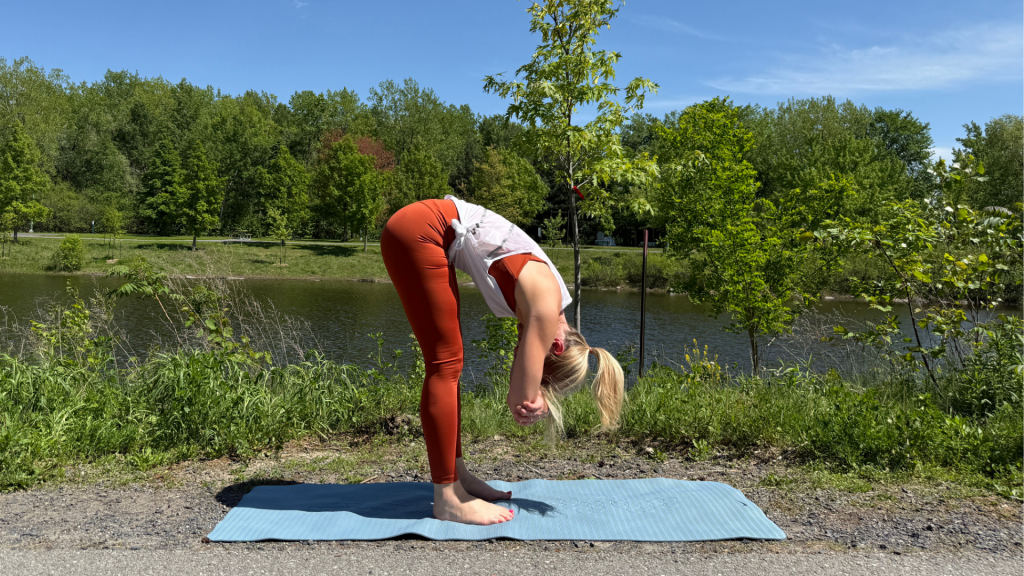
8. Triangle Pose: Trikonasana
Benefits: Improves flexibility in the legs and hips and challenges your balance. The twisting action can also aid digestion.
Helpful tip: Start with a wide stance, then tilt your torso to the side while keeping the spine long. Use a block to rest your hand on to avoid twisting forward.
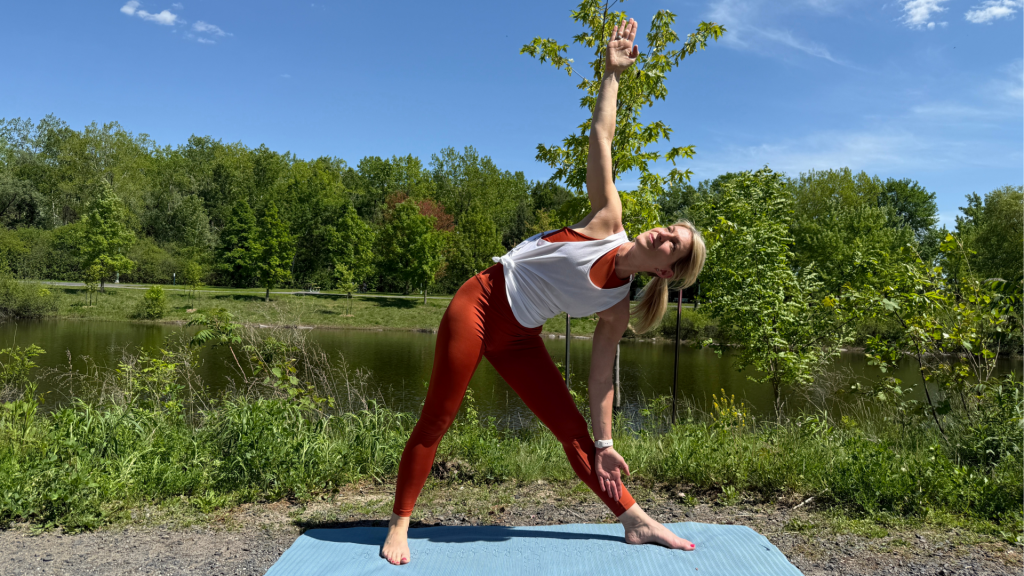
9. Tree Pose (Balance): Vrikshasana
Benefits: Improves balance, concentration, and stability in the legs and core. Lengthens the spine and opens the hips. Helps reduce stress and sharpen focus.
Helpful tip: Don’t try to place your foot too high at first. Keep the sole of your foot below the knee. As your balance improves, raise it above the knee. Fix your gaze on a point in front of you on the floor—it helps with stability.
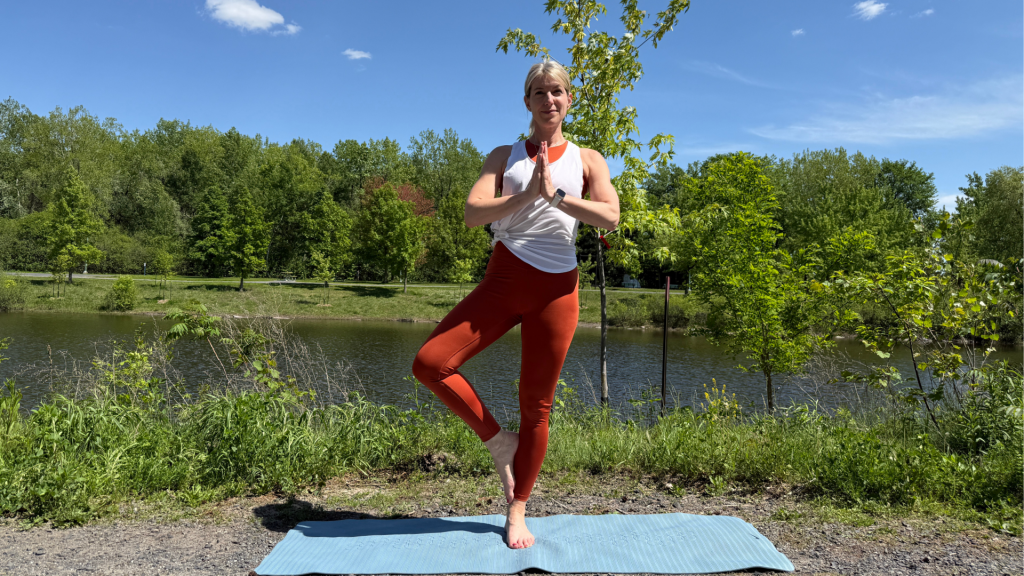
10. Corpse Pose: Savasana
Benefits: Deeply relaxes the entire body. Aids recovery, integration of your practice, reduces stress, and improves sleep through mindful breathing.
Helpful tip: This is the perfect moment to release both physical and mental tension. Let all your muscles soften and simply enjoy being still.
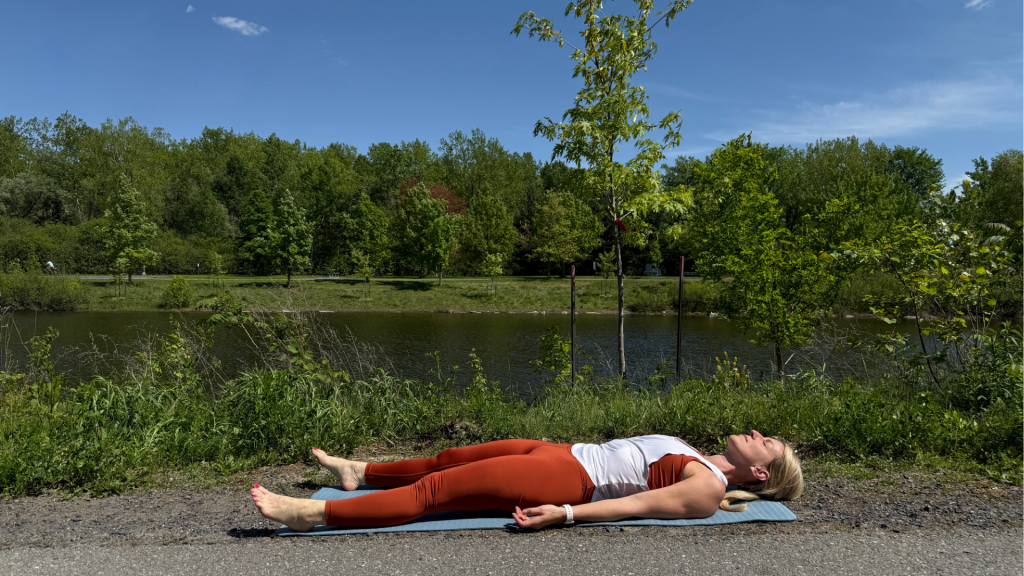
By familiarizing yourself with these 10 yoga poses before your first class, you’ll give yourself a head start for a smoother, more enjoyable experience. Remember, it’s not about executing every pose perfectly, but about listening to your body and progressing at your own pace.
Yoga is, above all, an inner journey—a moment to breathe, center yourself, and reconnect. So breathe deeply, smile, and let yourself be guided: your practice starts now.
Check out the yoga classes we offer at our centers right here!
10 yoga poses to know before your first class is a post from Nautilus Plus. The Nautilus Plus blog aims to help people in their journey to fitness through articles on training, nutrition, motivation, exercise and healthy recipes.
Copyright © Nautilus Plus 2025
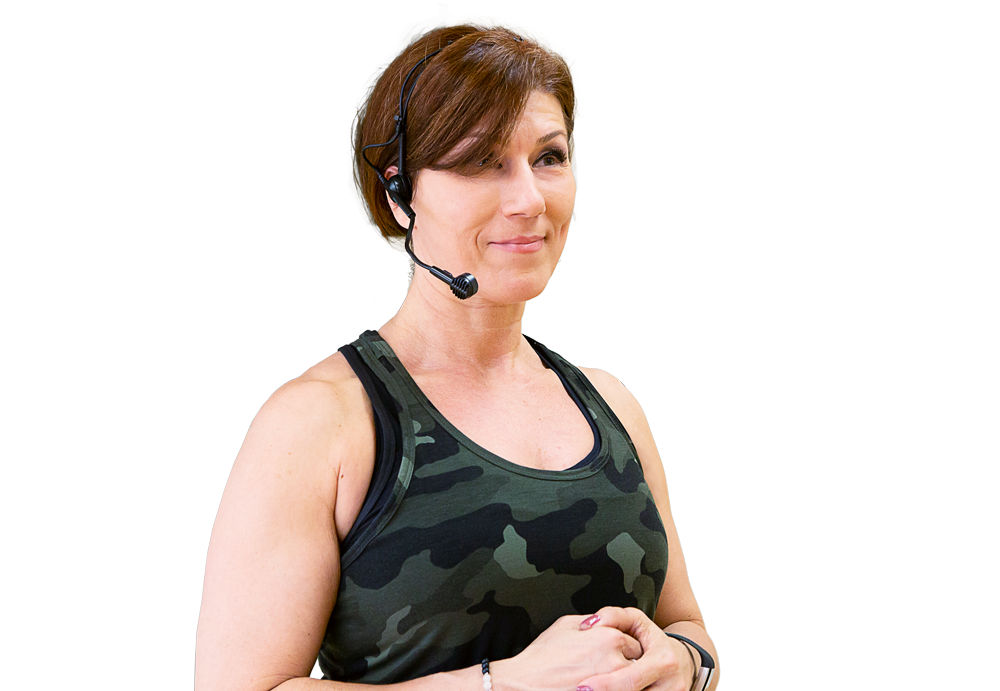
Work out in a group for more motivation!

A wide range of classes for all tastes and fitness levels led by our experienced instructors!
View group classes